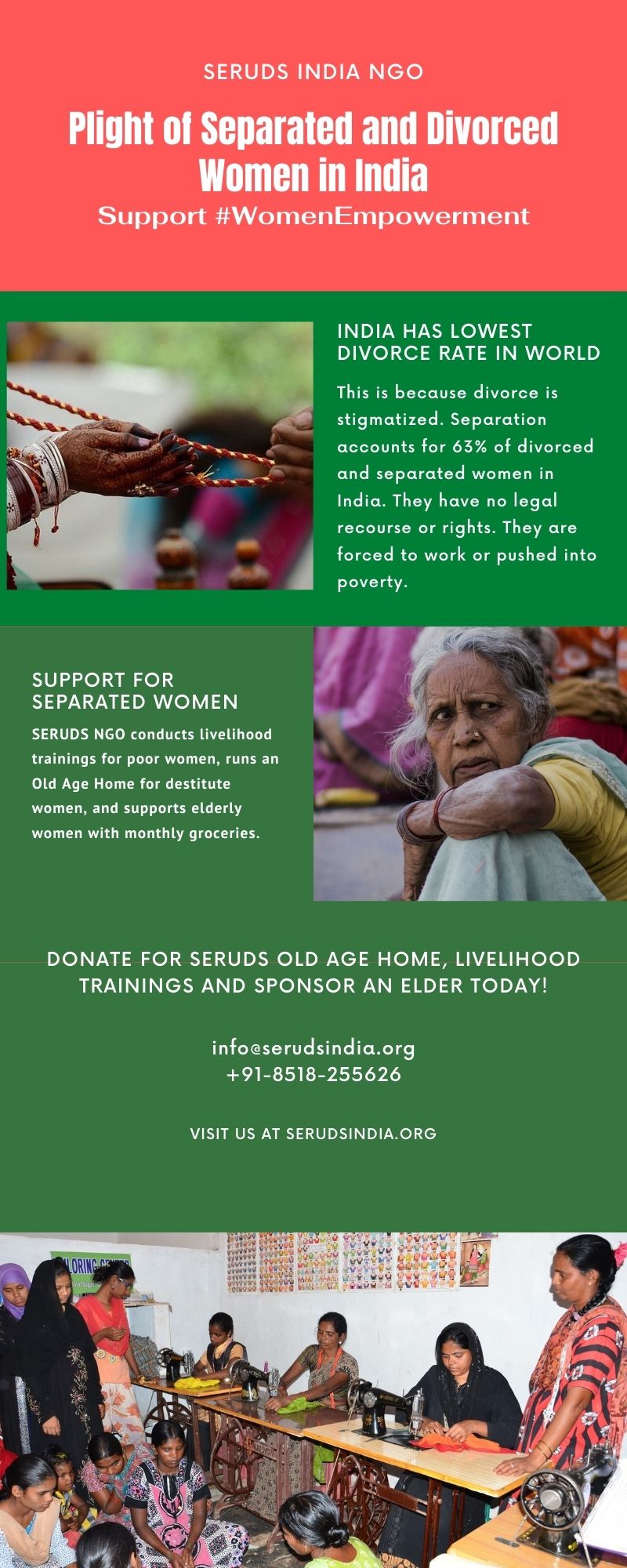The number of divorce cases has gone up in the recent times– it went from 0.50 per 1,000 marriages in 1988 to 13 per 1,000 in 2019. Despite the rising numbers, India still has one of the lowest divorce rates in the world, at below 1%. This is not a cause for celebration as it hides more than it reveals. More people are separated than divorced in India because of divorce is stigmatized, and Indian courts are infamous for taking years to resolve cases.
Women are usually encouraged by their families to stay with an abusive and violent husband rather than walk out of marriage. Separation or divorce is more frequently initiated by men because most women lack financial independence due to low participation in labor force and unfavorable inheritance laws. Women have very little freedom to leave an unhappy marriage and so continue to suffer. Due to the difficulty in getting speedy divorce and the burden of paying alimony on the husband, separation is the predominant form of marriage dissolution, accounting for 63% of divorced and separated women in India.
Since separations are usually informal, and include abandonment by the husband, affected women do not have much of legal recourse or rights. They are forced to take support of their natal families or are forced to work if they can find it, and often pushed into poverty.
Sometimes, women seemingly have the perfect marriage, with a great house, beautiful children, and a loving husband. But they feel unfulfilled, maybe as they wanted a career , and having married a ‘well settled’ boy, they were told to stay at home. Or maybe, the lovely children feel like a burden to her, as she cannot concentrate on ‘me time’, which could range from career to adventure sports.
Earlier, divorces were rare as family was held paramount and breaking a marriage was like committing a sin. There was a huge stigma attached to a divorcee, be it male or female.
Women rarely dared to walk out unless there was proven adultery by the husband, as most women lacked the financial means to support themselves and/or their children.
Now times have changed, and adultery might still rate high as a reason for break-ups. But there is also a great percentage of break ups as the couple do not feel they are ‘compatible’ or they ‘fell out of love’. There is not much desire to work at building up the marriage or take marital counseling.
With nuclear families, the women feel burdened, as Indian men even today do not share the household responsibility though they want a working wife. The in-laws also do not support with household chores, as they feel that they have to relax after they attain old age, and traditionally it is the responsibility of a woman to take care of the house and children.
Very often, the educated women can fend for themselves after separation, but those who lack higher education or skill sets can find themselves out in the cold. Their parents maintain that they have completed our responsibility towards the daughter, who should have compromised and stayed with her husband. In such circumstances, women often take up low paid or daily wage jobs and find it difficult to sustain a decent way of life.
Support for Separated Women
They need training in some livelihood activities, access to credit and job placement. NGOs like Seruds provide livelihood training and offer such women a chance to lead life with dignity.

SERUDS provides the following livelihood trainings for women in Kurnool :
• Tailoring & Embroidery Training for 3 months
• Computer Software Training for 6 months
• Fashion Design Training for 6 months
Some women are too old to start life anew with a job, and just need a shelter and medical care to live out the rest of their days in peace.
Old Age Homes or shelters for deserted women and elderly women enable them to lead life with dignity. Seruds Happy Old age Home shelters 20 women.



